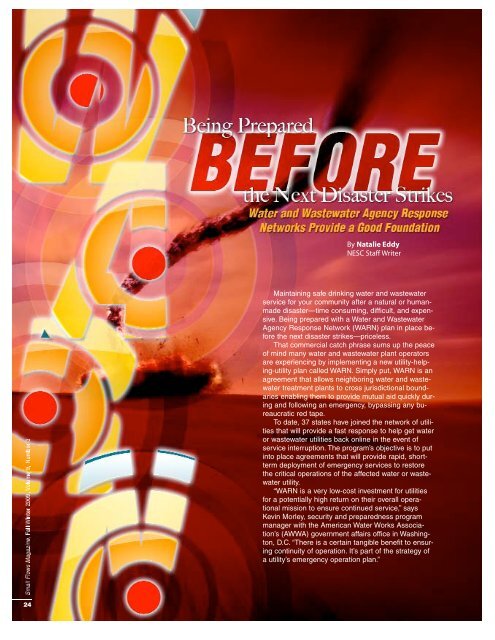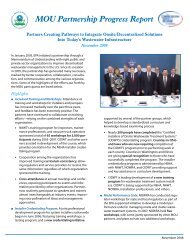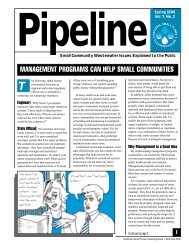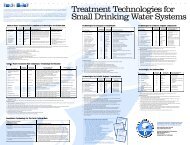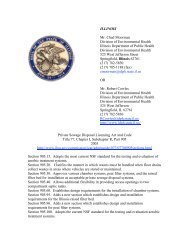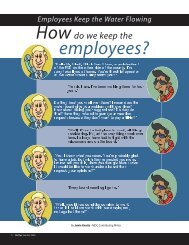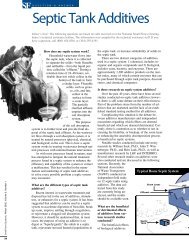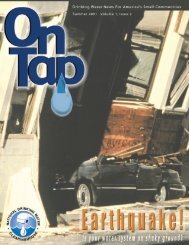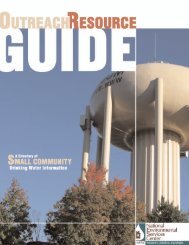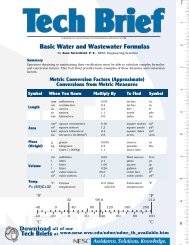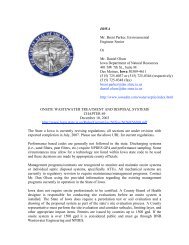Craig Mains | Technical Assistant - National Environmental Services ...
Craig Mains | Technical Assistant - National Environmental Services ...
Craig Mains | Technical Assistant - National Environmental Services ...
Create successful ePaper yourself
Turn your PDF publications into a flip-book with our unique Google optimized e-Paper software.
By Natalie Eddy<br />
NESC Staff Writer<br />
Maintaining safe drinking water and wastewater<br />
service for your community after a natural or humanmade<br />
disaster—time consuming, difficult, and expensive.<br />
Being prepared with a Water and Wastewater<br />
Agency Response Network (WARN) plan in place before<br />
the next disaster strikes—priceless.<br />
That commercial catch phrase sums up the peace<br />
of mind many water and wastewater plant operators<br />
are experiencing by implementing a new utility-helping-utility<br />
plan called WARN. Simply put, WARN is an<br />
agreement that allows neighboring water and wastewater<br />
treatment plants to cross jurisdictional boundaries<br />
enabling them to provide mutual aid quickly during<br />
and following an emergency, bypassing any bureaucratic<br />
red tape.<br />
To date, 37 states have joined the network of utilities<br />
that will provide a fast response to help get water<br />
or wastewater utilities back online in the event of<br />
service interruption. The program’s objective is to put<br />
into place agreements that will provide rapid, shortterm<br />
deployment of emergency services to restore<br />
the critical operations of the affected water or wastewater<br />
utility.<br />
“WARN is a very low-cost investment for utilities<br />
for a potentially high return on their overall operational<br />
mission to ensure continued service,” says<br />
Kevin Morley, security and preparedness program<br />
manager with the American Water Works Association’s<br />
(AWWA) government affairs office in Washington,<br />
D.C. “There is a certain tangible benefit to ensuring<br />
continuity of operation. It’s part of the strategy of<br />
a utility’s emergency operation plan.”<br />
24


